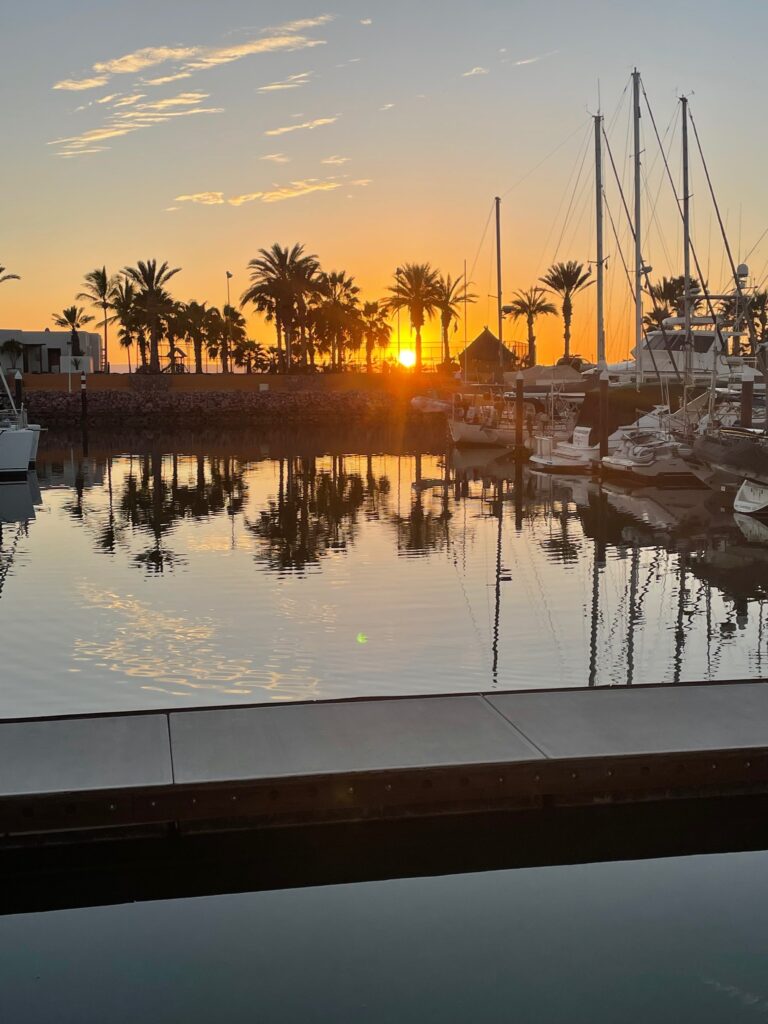On Monday, February 13, the half-full moon rose not long before the sun did, and was shining brightly in the pre-dawn glow.

We tried to catch the 1310 shuttle to town. We left Kosmos at 1302. We got to marina gate at 1305, which requires a card key to get both in and out. There were people walking out ahead of us. They used their card key to open the door. They held the door open for us to exit, but Eric realized that he’d forgotten our card key. He sprinted down the dock while Christi and Keith waited inside the gate for him. He was back at 1307. The card key didn’t work. A marina employee happened to be standing on the other side of the gate. He tried to open the gate for us, but his card didn’t work, either. He proclaimed the door was broken. He walked to a utility box a little ways down the boardwalk, looked at it for maybe a minute, then turned the gate off. He waved to us to indicate that it could be opened without a key card. It now was 1312.
We ran to the shuttle stop, hoping that it would be late again, like it had been yesterday. There was no shuttle there. There happened to be a staff person watering the plants. She confirmed that the shuttle had already left.
The chain of events was so strange that we decided that maybe we weren’t meant to go to town that day.
On Tuesday morning, Christi and Keith washed the boat again. We’d noticed that the boat was again covered with the dry resin, but it didn’t seem like it was too bad. But once we rinsed the boat down, it turned into clingy oil that just did not want to come off the boat. To make matters worse, we also noticed quite a few small yellow spots that did not come off when scrubbed. Christi and Keith only managed to get 2/3 of the boat done before it was time to get ready to go to town.
Christi later talked to some professional boat washers who happened to be washing another boat on the dock. They confirmed the resign was from the electricity plant and suggested a specialty product to remove the spots.
Tuesday afternoon was a repeat of Sunday, except that we went to a different museum and skipped ice cream. We caught the 1310 shuttle to town and went to Locos Por La Pasta for lunch.
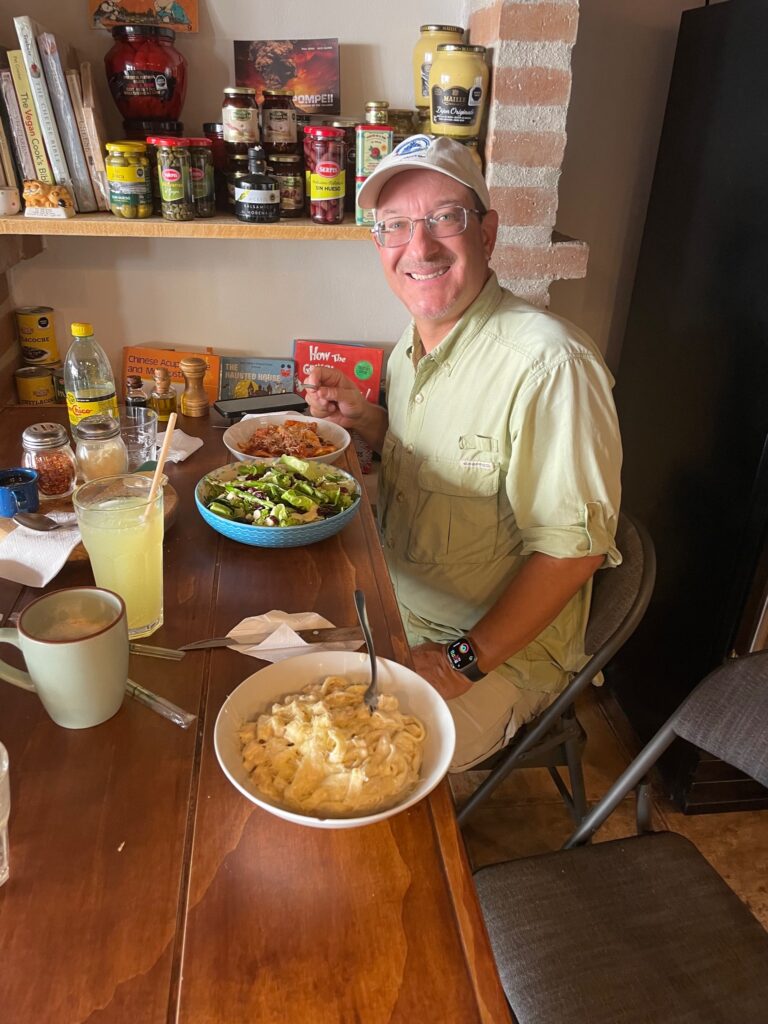
After lunch, we walked the 4 or 5 short blocks to the Zona Arqueolologica Museo Regional de Baja California Sur Archeology of Southern Baja (Archeology of Southern Baja California). On the outside was a sculpture that was probably supposed to be a person standing under the sun. But at certain angles, it looked like the Eye of Sauron sucking a person’s soul from their body.
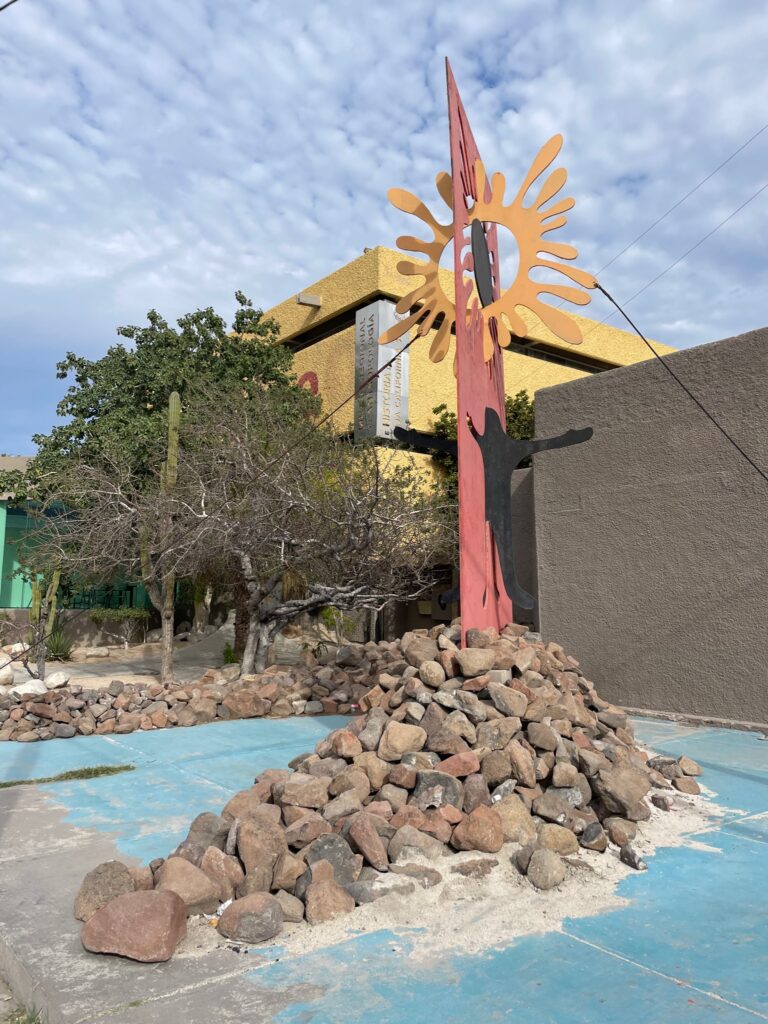
The entrance fee was $3.50 per person, with no child discounts for foreigners. On the ground floor was the entrance, a gift shop and one exhibit room, which was devoted to the subaquatic. There was a large map showing sunken ships/submarines on the Pacific side, with quite a bit of information on each of the ships/submarines and old photos of the ships/subs.
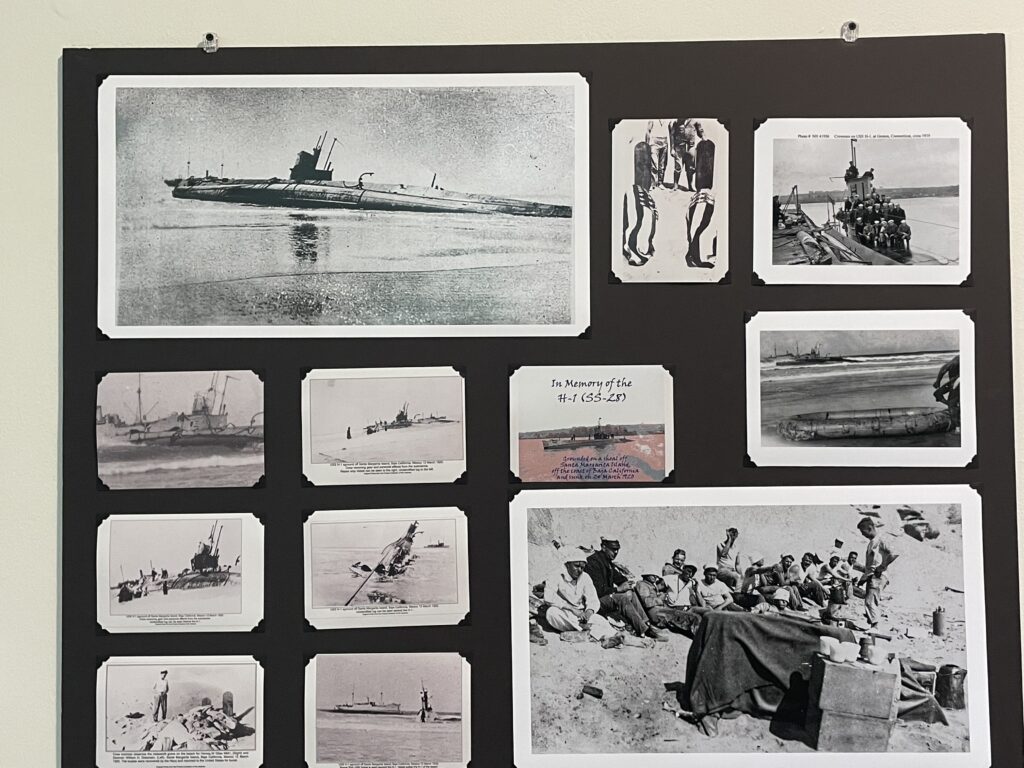
Upstairs, the exhibits went in chronological order. The display at the top of the first staircase explained that the region started forming 230 million years ago via volcanic activity. The volcanic activity diminished 12 million years ago. The area was not originally a desert, but the climate began changing into a desert 7,000 years ago.
Past that display, the rest of the floor talked extensively about the indigenous people of the area. The first inhabitants were called “Bandas” and it was believed that they came down from North America during the last ice age, traveling 6,000 miles along the pacific coast. It sounded like there were three distinct different indigenous groups on the Baja peninsula, one to the south, one in the central peninsula and one in the north.
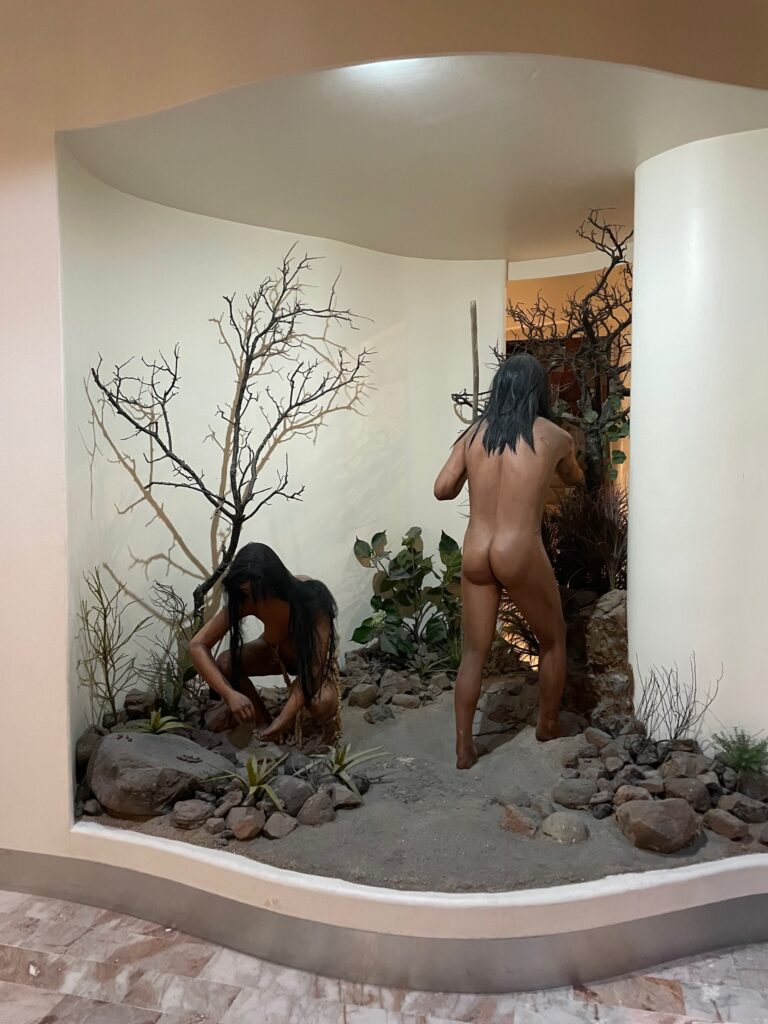
The next floor had a big exhibit on the “Gran Mural,” which are ancient cave paintings located in the municipality of Mulaje. The paintings were dated as 11,000 years old, and the local indigenous tribe said the paintings were already there when they arrived in the area. The indigenous people believed that giants lived in the area before they arrived, and that the giants made the paintings. This is a photo of one of the photos on display in the room. The cave paintings were huge, so it wasn’t hard to believe that they could have been made by giants.
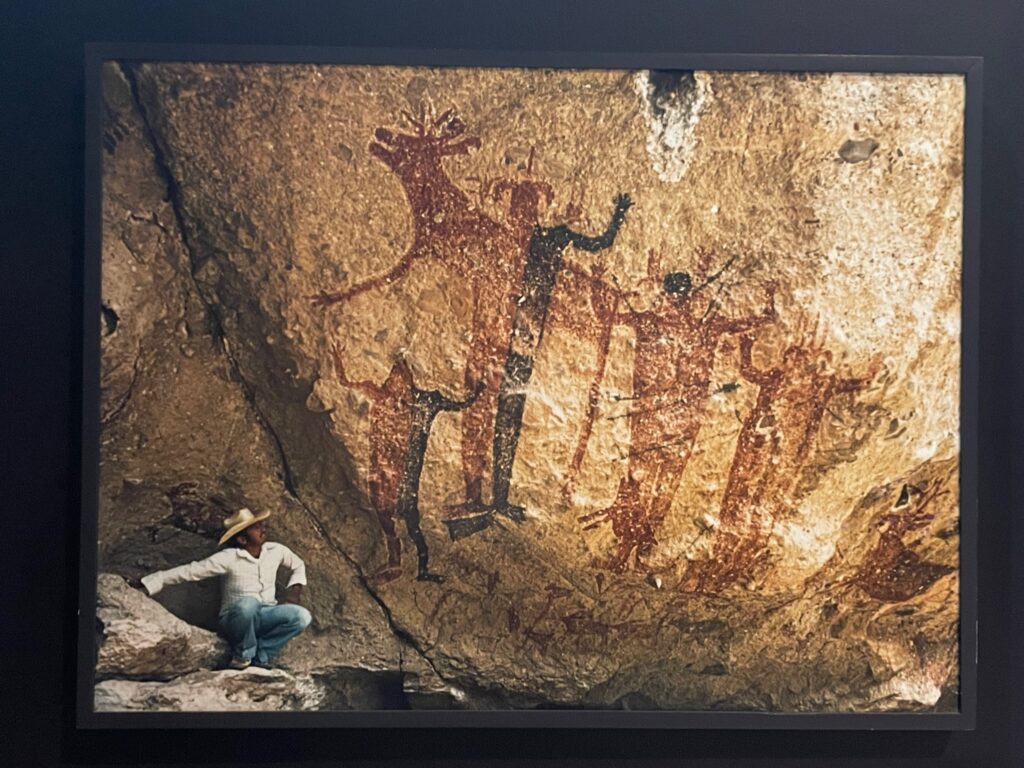
Many cultures believe that giants once existed, and the bible mentioned giants several times. One of the tourists in the museum told us that the Mulaje cave paintings were one of the most amazing things he’d ever seen, that he rated them up there with with the Egyptian ruins. We were sad that we hadn’t gone when we were Bahia Concepcion (which was part of the Mulaje municipality). At the time, none of us were feeling good. There was no way we could have done the extensive hike necessary to get to the cave, particularly in the heat.
The next floor focused on how the changes that European colonization brought. There were a lot of signs, but few exhibits. The top floor focused on Mexico becoming its own nation, as well as the new cultures that evolved. Here was the display for the rancho culture.
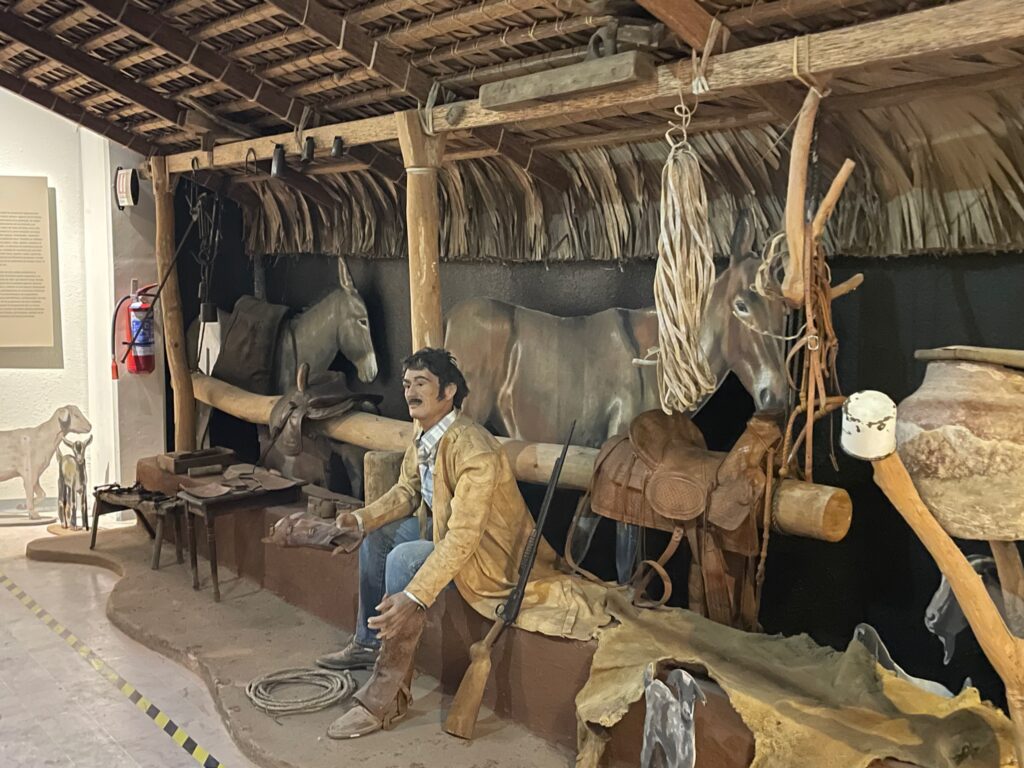
None of the signs were in English, nor was there an audio tour. There was a lot of information on the signs and not many visual exhibits. Here was another photo of the top floor that helps give a sense of the types of items/density of items on display.
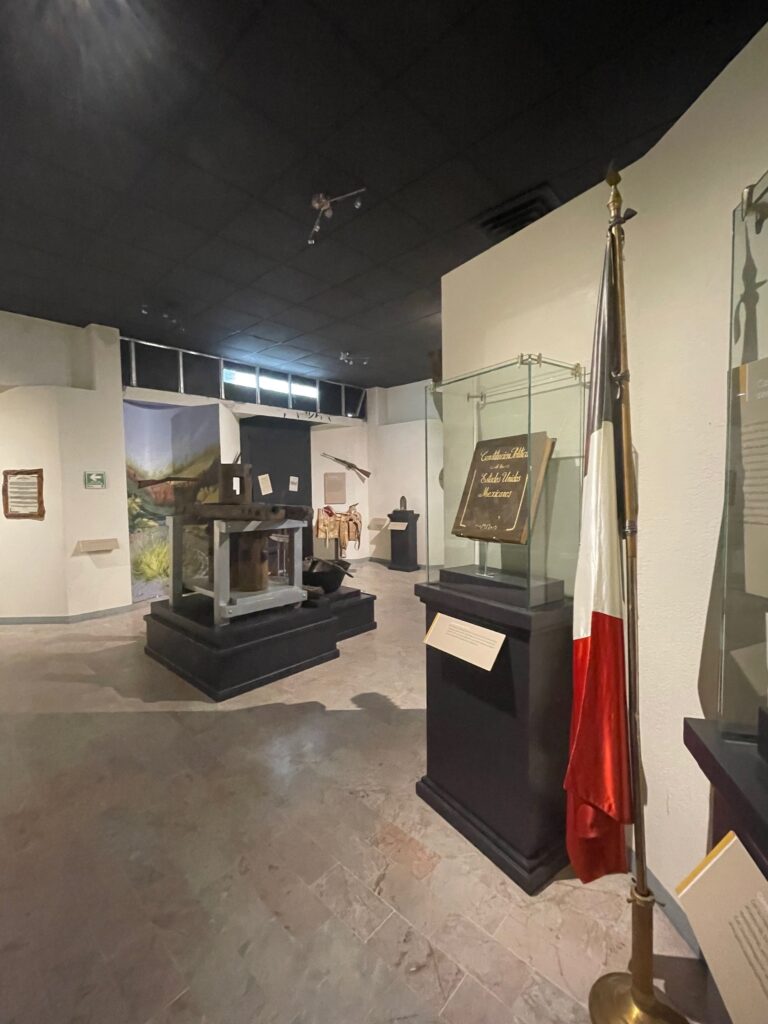
As poor Spanish speakers, we didn’t get nearly as much out of the museum as better Spanish speakers would have. But there was a historian there who spoke fluent English who was happy to answer questions. The was also a movie in Spanish with sub-titles, but we we were tired of reading and didn’t opt for the movie. In retrospect, we should have the historian to give us a guided tour, but we didn’t think about that until after we left.
After the museum, we walked back to the nearby market to get a few more things, then went back to the marina for the evening. We again had to wait a while before an Uber driver accepted our ride. Here was the sunset.
